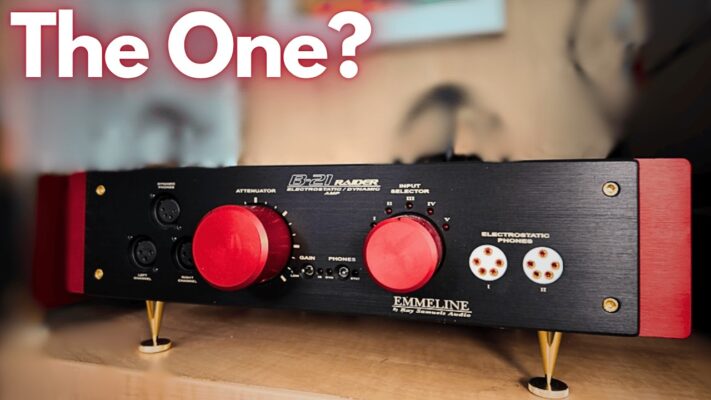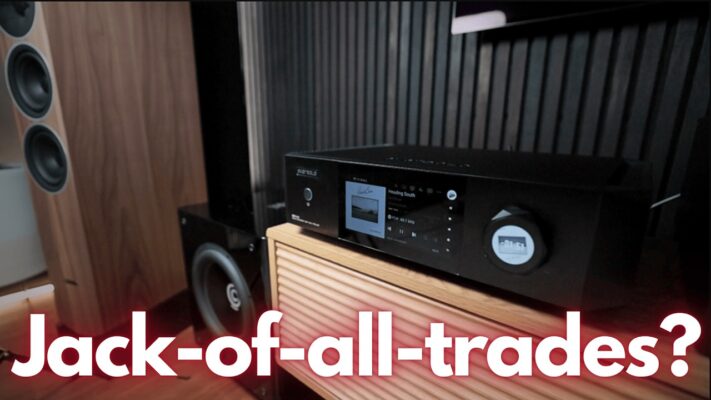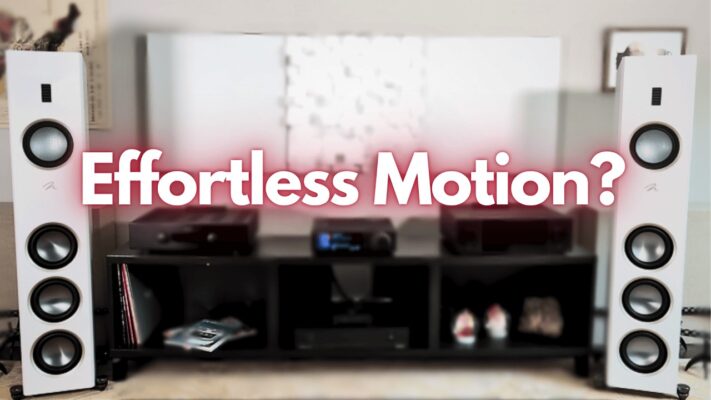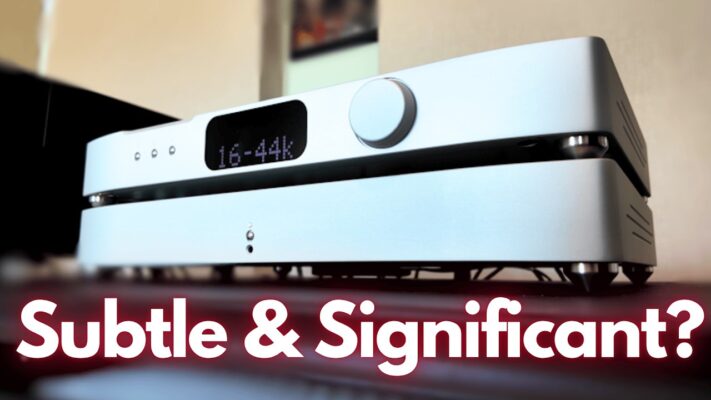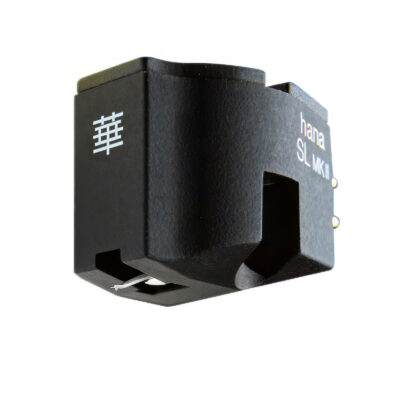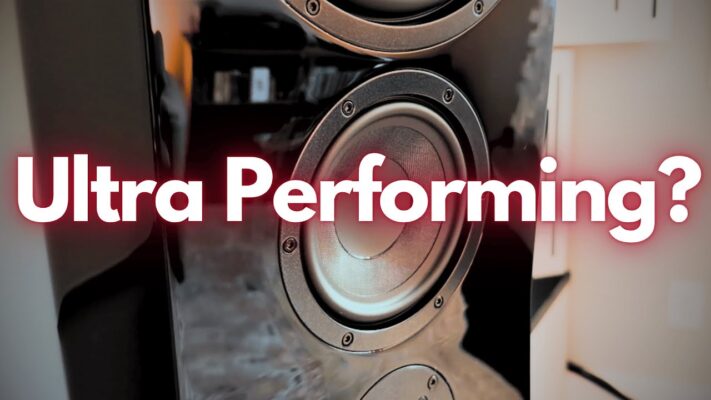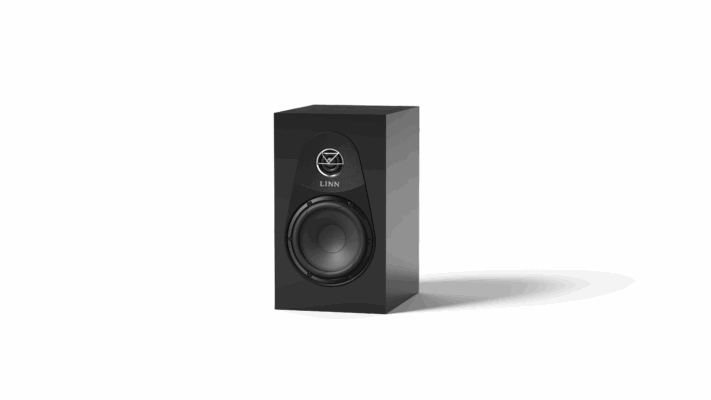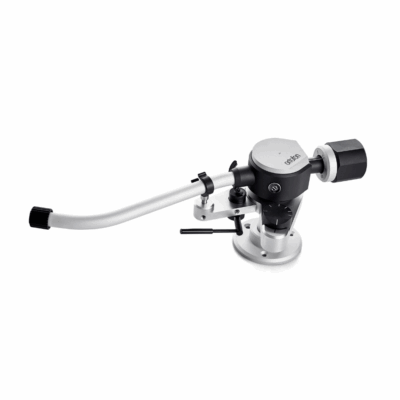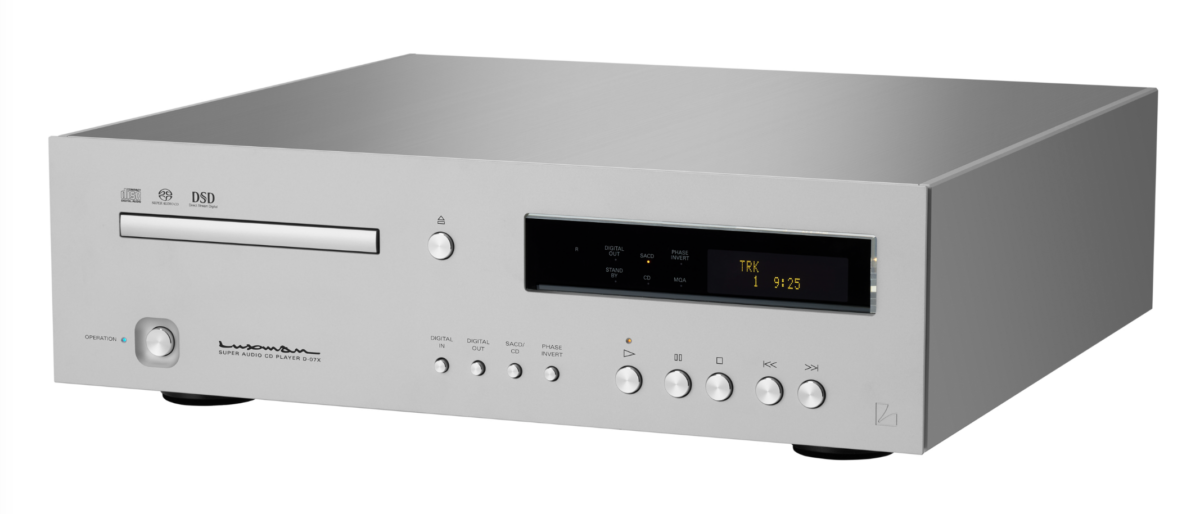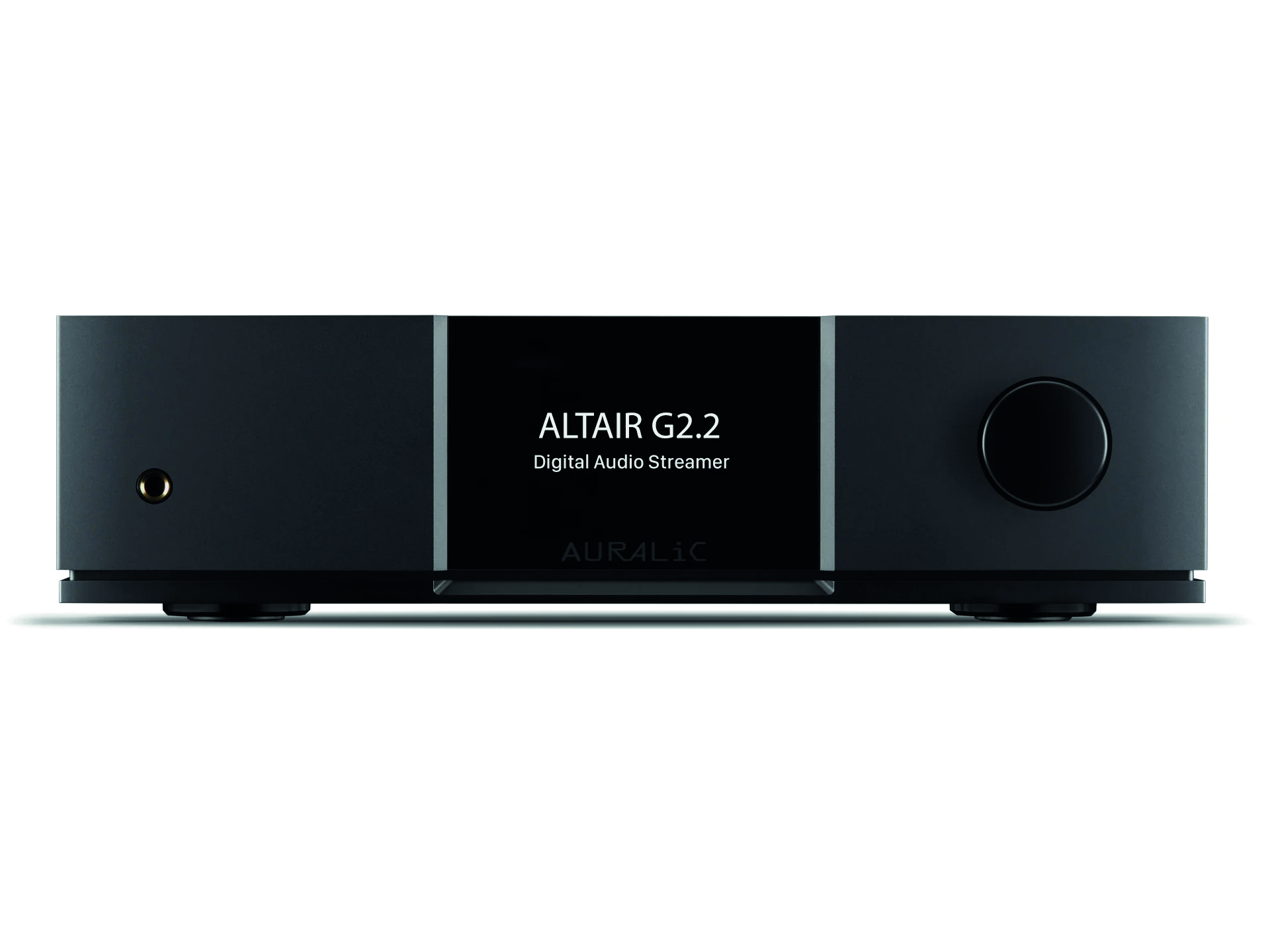
Since its foundation in 2009, AURALiC has steadily built a well-deserved reputation for its advanced, class-leading digital audio products that deliver exceptional sound quality, elegant styling, and robust, battleship-like build quality, all at reasonable (though not excessive) price points.
AURALiC’s ALTAIR G2.2, announced in May 2024, replaces its ALTAIR G2.1, launched exactly three years earlier in May 2021. Although many key specifications between the two appear unchanged, the new G2.2 is claimed to be a complete redesign with about 90% different components.
The ALTAIR G2.2 is an extremely versatile product. Essentially, it’s a high-quality stand-alone streamer. However, it also serves as a DAC with USB, coaxial, and optical inputs. Additionally, it can operate as a pure analogue preamp, featuring a single line input along with a phono input for MM cartridges.
Are you two sisters?
Visually, the new G2.2 is identical in size, shape and colour to the G2.1. Indeed, from the front, it’s nearly impossible to distinguish between them. The rugged build quality and durable high-quality finish remain unchanged. However, take a look at the rear panel, and you’ll notice quite a number of changes.
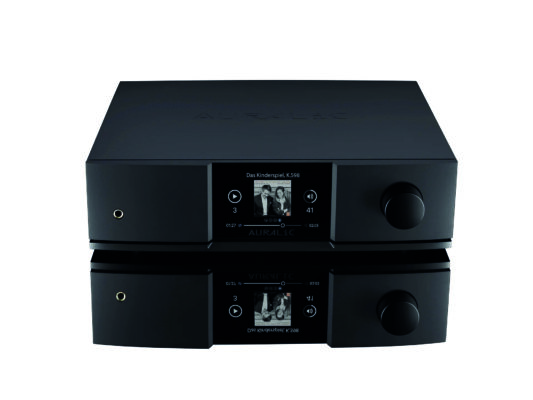
The exceptionally solid housing of the ALTAIR G2.2 protects its delicate, sensitive innards. Four support feet contain five decoupling springs to isolate the chassis from outside vibration. Don’t put heavy things on the unit, as this will compress the springs.
AURALiC’s ALTAIR G2.1 is a mature, highly capable product that remains competitive. But if a week is a long time in politics, three years is a lifetime in digital audio. Hence, the decision to update it. The goals were reduced noise, increased capacity, faster processing and improved sonics.
The maximum output voltage has been increased from 4.4V to 6V. This additional output will be beneficial when the G2.2 is utilised as a preamp in conjunction with low-sensitivity power amplifiers driving inefficient speakers. If 6V is too high, you can easily adjust it to a lower value.
The G2.2 now has Galvanic isolation between its Tesla G3 processing platform and balanced Class A ORFEO output modules. This protects the analogue circuits from noise and unwanted interference, resulting in 90% less noise and jitter than the ALTAIR G2.1.
Quad-core
The G2.2’s quad-core 64-bit processor (eight times faster than the one used in the G2.1) delivers superior performance that can cope with evolving digital streaming demands. AURALiC’s DMA (Direct Memory Access) technology allows direct connection to the processor’s Core.
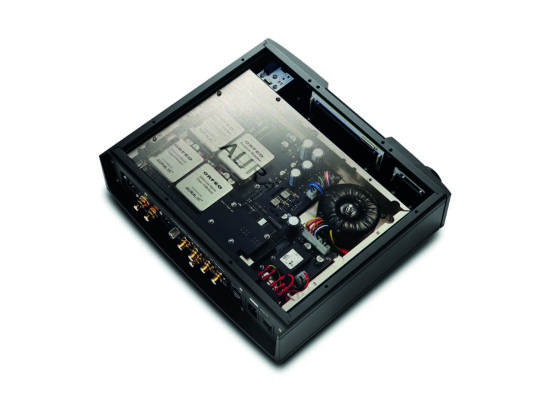
AURALiC asserts that DMA is the reason for reductions in latency and jitter. With 4GB of system memory and data storage, the G2.2 provides rapid signal processing that better accommodates advanced high-resolution signals and enhances the unit’s futureproofing.
There’s space inside for a solid-state hard drive with a maximum internal capacity of 4TB for those wishing to rip their existing CD collections. As I already own an external stand-alone solid-state hard drive, I haven’t utilised this feature myself – but it’s available if you require it.
Alongside USB and coaxial digital inputs, the G2.2 offers HDD USB and HDMI eARC inputs, as well as two TOSlink optical digital inputs—whereas the G2.1 only provided one. However, the G2.1’s AES Balanced XLR digital input has been omitted due to space constraints.
Mellow moods
A new feature is the option of a ‘Clear’ or ‘Mellow Tone’ setting. The latter adds harmonics to enhance the sound subjectively. Unfortunately, I wasn’t particularly impressed by ‘Mellow’, but it’s worth noting that this feature is still in Beta and may well be improved. More work is required, but the idea has potential.
Hopefully, one day, ‘Mellow’ will provide a useful alternative for those who find ‘Clear’ too direct and rigid on certain recordings. Any future changes or updates will arrive through a firmware update.
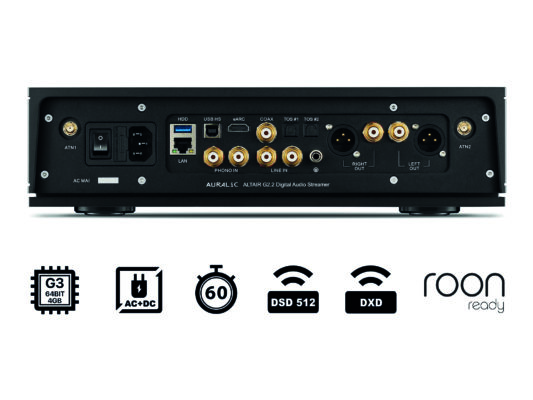
One of the key features of the G2.1 was its lossless stepped analogue resistor volume control. The G2.2 retains this feature, and AURALiC asserts that it provides significant advantages over digital volume control systems. While the latter accurately reduce signal levels, they do not lower the noise floor.
A true analogue volume control lowers signal levels and the noise floor while maintaining the full dynamic range. Eight coil-latch relays use no power, and no EMI noise is produced when the relays are inactive.
The result is a noise- and distortion-free, lossless analogue volume control featuring 100 steps in 1dB increments. AURALiC asserts that its implementation consistently remains electronically transparent, ensuring no difference in sound quality between full and attenuated output.
On balance
It’s disappointing to lose the AES/EBU digital input. I frequently used this input when pairing my G2.1 with a CD transport, as it provided superior sound compared to coaxial. However, I now use a PS Audio PerfectWave SACD transport, which features an I2S output through an HDMI socket.
I hoped this might work using the G2.2’s eARC HDMI input, but sadly, it didn’t! I encountered the same issue with Topping’s DX9 DAC. Alas, it seems the I2S output offered by PS Audio’s CD/SACD transport only functions when connected to the I2S input of a PS Audio DAC.
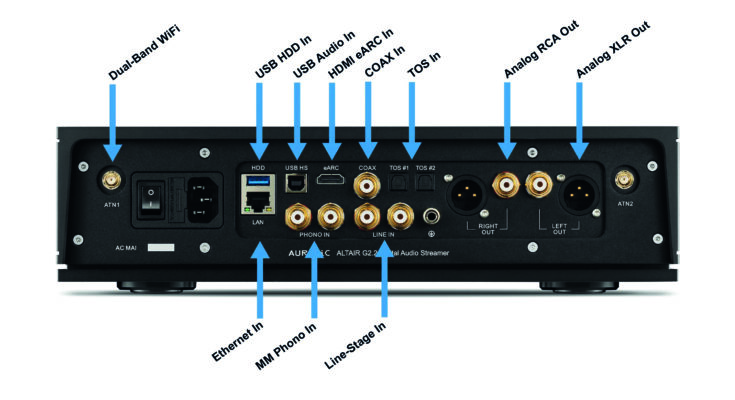
Does this matter? Probably not… With CDs in decline, it’s unlikely many will be particularly bothered. However, it’s a pity, as I2S maintains the various clock and signal data lines separately (instead of multiplexing them), which noticeably enhances CD sound quality compared to coaxial or AES/EBU.
Vinyl and cans
The G2.2’s built-in MM phono stage is quite respectable, as is the headphone amp. Although a good outboard phono stage or dedicated headphone amp will undoubtedly sound even better, both options are perfectly acceptable and useful to have.
As a streamer, the G2.2 supports all the usual platforms: Spotify, TIDAL, Qobuz, Amazon Music, and AirPlay2. It is also Roon-ready. When using Qobuz through AURALiC’s Lightning app, you receive CD booklet notes and images for most classical music releases— a very useful feature in my opinion.
I reviewed the original ALTAIR G2.1 in the summer of 2021, shortly after its introduction, and was so impressed with its performance that I went ahead and purchased one. Sound quality was a significant factor, but what truly clinched the deal was AURALiC’s IOS Lightning App.
Lightning’s slick user interface was a revelation when partnered with an Apple iPad. Alas, Android users are less well served. AURALiC abandoned the development of its dedicated Android App due to variations and inconsistencies between different phones.
However, although AURALiC lacks an Android app, you can utilise OpenHome-based control software such as BubbleUPnP and Linn Kazoo. My advice? Don’t waste your time! Beg, borrow, or steal an iPad to experience the superb user interface of AURALiC’s Lightning iOS app. You won’t regret it.
Setting up
The installation was relatively straightforward, and the G2.2 was soon operational via its balanced XLR outputs. These provide a slightly superior sound compared to the unbalanced RCAs, delivering a bigger, more dynamic audio experience with enhanced presence. Additionally, you receive a bit more gain.
I switched the anti-aliasing filter from ‘Smooth’ to ‘Dynamic’ to align with my G2.1. While many DACs offer various anti-aliasing filters, the differences are often so subtle that they hardly justify the effort. However, AURALiC’s four filters — ‘Precise’, ‘Dynamic’, ‘Balance’ and ‘Smooth’ — produce a noticeable difference and are worth exploring.
When comparing the G2.1 and G2.2 streamers for sound quality, it is clear that the G2.2 surpasses the former. Tonally, both are quite similar in terms of voicing, and each provides a natural and unexaggerated sound. However, with attentive listening, it soon becomes clear that they are not exactly the same.
Comparing the two
Beyond a few native similarities, the G2.2 delivers a smoother, more flowing musical presentation. It is cleaner, more refined, more fluid and more relaxed. The music sounds silkier, with improved purity on vocals and less harshness on bright percussive instruments like the harpsichord.
In comparison, the G2.1 appears slightly grainier. It isn’t quite as clear and pure. A recital for violin and piano featuring Viktoria Mullova and Katia Labeque on Signum showcased a few key differences. Through the G2.2, their performance exhibited a clean, limpid transparency that was highly engaging.
The G2.1 also sounded good, but I noticed a slight tonal coarseness. The music didn’t flow as effortlessly, and the playing felt a touch less gracious. It wasn’t significantly worse, but the G2.2 was somewhat more persuasive and drew one deeper into the music (and performance).
The G2.2 sounds like a genuinely good analogue source rather than a digital one. The G2.1 isn’t quite as effortlessly neutral or fluid, as if there’s a slight noise component present that introduces a hint of glare. Why? I believe the G2.2’s cleaner sound is attributed to its galvanic isolation.
Listening to the G2.2 was easier and more comfortable. There is an innate rightness about its musical rendition that is very compelling. While the differences between a G2.1 and a G2.2 may appear superficial, once identified, they become surprisingly significant and difficult to overlook.
Additional refinement
The additional refinement and clarity of the G2.2 makes it more tolerant of flaws and limitations in the source material. However, that’s not entirely accurate. The G2.2 is not so much ‘forgiving’ of flaws as it is less reactive to them. It doesn’t introduce any unpleasant artefacts of its own…
I noticed this while playing some historical albums by Sir John Barbirolli, including his pioneering 1950 account of Rubbra’s 5th symphony. The G2.2’s clarity and focus allowed me to hear deeply into the recording, and the result sounded surprisingly good.
Streaming Rubbra 5 through the G2.1, I noticed a slight glare that obscured low-level detail, rendering the limitations of EMI’s 1950 mono recording more apparent. The result remained very listenable, but there is no question that the G2.2 performed better.
Using the PS Audio PerfectWave SACD Transport and DirectStream DAC as a reference, I compared various CD and SACD recordings with the streamed version via Qobuz. The PS Transport and DAC set a very high standard, yet the G2.2 effortlessly matched it in terms of clarity and tonality.
Indeed, CD and Streaming sounded very close most of the time, making it difficult to discern any meaningful difference or say which was better. Typically, a Hi-Rez stream from the G2.2 matched the equivalent SACD played on the PS Transport/DAC.
Many brothers
Another album I compared was Dire Straits’ Brothers in Arms, specifically the original first-press CD from 1985, the 1996 CD remaster, and the 2005 20th Anniversary SACD. How did these fare against the album streamed from Qobuz? Once again, it was a close-run thing.
I was surprised Brother in Arms was still in vanilla-plain 16-bit 44.1kHz rather than Hi-Rez. Is that because it’s an original digital recording? Nonetheless, it sounded very good—noticeably fuller and richer than my original 1985 CD, which seemed to have been transferred at a slightly lowish level.
The 1996 remastered CD represented a superior transfer and sounded better, comparing very favourably to the Qobuz stream via the G2.2. Indeed, once I had equalised the levels, it was difficult to discern a significant difference between the 1996 CD and the streamed album.
The SACD offered a slightly airier and more spacious sound, though the difference was minimal. The PS Audio combo excels with CD, making the perceived distinction between CD and SACD rather small. The higher frequencies tend to be generally freer and more open with SACD, although this effect is subtle.
Outstandingly good
From this, I conclude that the ALTAIR G2.2 is outstandingly good—to all practical intents and purposes, nearly perfect. It extracts every last scrap of musical information from streamed digital files and delivers a rewarding and involving musical presentation that is coherent, refined, and precise.
But who knows? Three years from now, AURALiC might launch a revamped ALTAIR G2.3 with even better specifications. However, unless some unforeseen major breakthrough takes place, I worry it won’t be easy to produce something that sounds significantly superior to today’s G2.2. Here’s why…
We’ve reached a point of diminishing returns where improvements are becoming increasingly minimal. A future upgrade might well deliver an astonishing 80% reduction in noise. But – so what? If that noise is already at vanishingly low levels, having 80% less is unlikely to seem particularly significant subjectively.
For those looking to buy their first streamer or upgrade from something older and more basic, investing in AURALiC’s ALTAIR G2.2 will be pure delight. You’ll get a versatile unit with great sound quality and the matchless user interface of AURALiC’s Lightning App on an iPad.
What more can I say? If the AURALiC ALTAIR G2.2 appeals to you, simply purchase one and live happily ever after…
Specs & Pricing
Type: Streaming DAC preamplifier
Digital Inputs: Coaxial (2), Toslink, USB Audio, HDMI eARC
Analogue Inputs: Line-stage (2Vrms max.), MM Phono (0.3Vrms max.)
Streaming Inputs: Network shared folder, USB Storage, USB CD Drive, Optional Internal Storage, UPnP/DLNA Media Server, Amazon Music Unlimited, HighResAudio, KKBOX, Qobuz Sublime+, TIDAL Connect, AirPlay, Spotify Connect, Internet Radio, RoonReady
Audio Outputs: Balanced: XLR (6V / 2V user selectable, output impedance 5ohm). Unbalanced: RCA (6V / 2V user selectable, output impedance 50ohm). Headphone: 6.35mm Headphone Jack (output impedance 5ohm)
Network connections: Wired: Gigabit Ethernet. Wireless: 802.11b/g/n/ac Tri-Band WiFi
Control Software: AURALiC Lightning DS for iOS, AURALiC Lightning DS for web browser (device setting only), OpenHome compatible control software (BubbleUPnP, Kazoo), Roon (Roon Core required separately)
Streaming File Formats: Lossless: AIFF, ALAC, APE, DIFF, DSF, FLAC, OGG, WAV and WV. Lossy: AAC, MP3 and WMA
Sampling Rate: PCM: 44.1kHz to 384kHz in 32Bit. DSD: DSD64(2.8224MHz), DSD128(5.6448MHz), DSD256(11.2896MHz), DSD512(22.57892MHz)
Frequency Response: 20Hz-20kHz, ± 0.1dB
THD+N: < 0.00012% (XLR); < 0.00015% (RCA), 20Hz-20KHz at 0dBFS
Dynamic Range: 130dB, 20Hz-20KHz, A-weighted
Dimensions (W x D x H): 34 x 32 x 8cm
Weight: 10kg
Price: £5,985, $6,099, €5,999
Manufacturer AURALiC
www.auralic.com
Tags: DIGITAL NETWORK DAC PREAMPLIFIER STREAMING










